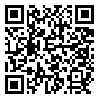BibTeX | RIS | EndNote | Medlars | ProCite | Reference Manager | RefWorks
Send citation to:
URL: http://jsaeh.khu.ac.ir/article-1-2314-en.html
Coastal aquifers comparing noncoastal aquifers, are faced to natural hazards more rapidly due to incorrect managements (Bear et al. 1999). Aquifer’s vulnerability to various pollutants or intrusion of saline water to coastal aquifers have been studied by several researchers so far (Chachadi et al., 2002 Cardona et al., 2004). Overlay models are produced to overlay physical indicator maps and weight them (NRC, 1993). There is a high potential in applying methods based on spatial analysis, in hydrogeological studies. Assessment of natural hazards due to over-extraction of groundwater in Urmia coastal aquifer is the aim of this study which can leadto evaluating of groundwater quality fluctuations in coastal aquifer and also salt water intrusion in coastal aquifer. Study area is Urmia plain coastal aquifer. This plain is bounded from North, East, South and West by Zola chai and Kherkhere chai watersheds, Urmia Lake, Gadar Chai watershed and boundary mountains of Iran and Turkey respectively. Present study focused on, utilization of overlaid natural hazards substantial evaluation groundwater over extraction indices spatial models method, using Geographical Information System (GIS). Flow chart of the Methodology of present study is depicted in figure Fig 1. Methodology flowchart of present study Drawdawn is meaningless?? “Counductivit “is wrong “conductivity” is true. Six parameters that have crucial importance in hazards caused by groundwater over-extraction and groundwater quality depletion subsequently, have chosen upon to literature review, various studies and authors expertise (Nobr et al, 2007 Hammouri and El-Naqa 2008). Weights and ranks were indicated base on experimental results or authors judgment and experts knowledge in similar studies and statistical methods. Used indices final weights were determined as below: Total dissolved solid (TDS) (1), discharge of water wells (2), hydraulic conductivity (1), Aquifer thickness (1.5), Water table depletion (3), Distance from lake shore (1.5). Weight of every layer is given to layers ranks. Final map was determined and areas with low, moderate, high and very high vulnerability was ranked eventually considering the vulnerability amounts importance. Fig 2. Final map of Spatial Analysis of Natural Hazards in the aquifer of Urmia region The results of this study revealed that natural hazard’s rates in Urmia Lake coastline due to salt water intrusion and also in aquifer central part is very high, which caused by groundwater over-extraction. Final map shows the areas with low vulnerability has covered 191 square kilometer (about 20 percent of the study area). In these areas groundwater extraction is low and the thickness of aquifer is also negligible. Areas with moderate and high vulnerability contain 353 (37 percent) and 119 (13 percent) square kilometer respectively. In the coastal and central parts of the plain, groundwater extraction is so high and of course features the very high vulnerability that covers 30 percent and 280 square kilometer of the study area.
Received: 1970/01/1 | Accepted: 2016/03/10 | Published: 2016/03/10
| Rights and permissions | |
 | This work is licensed under a Creative Commons Attribution-NonCommercial 4.0 International License. |





